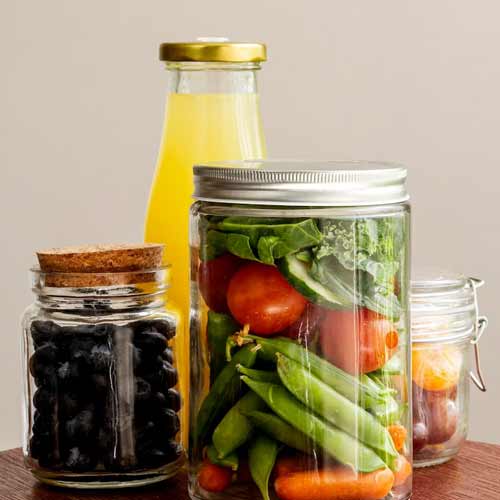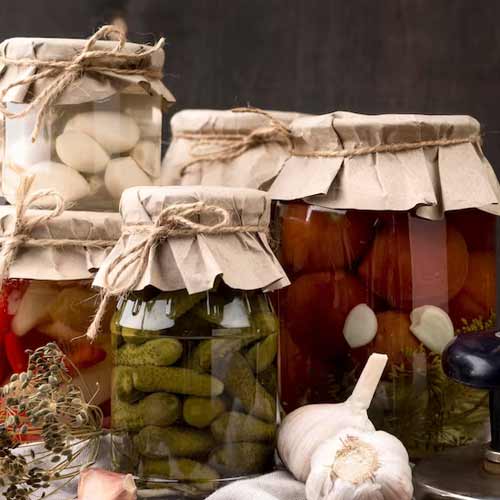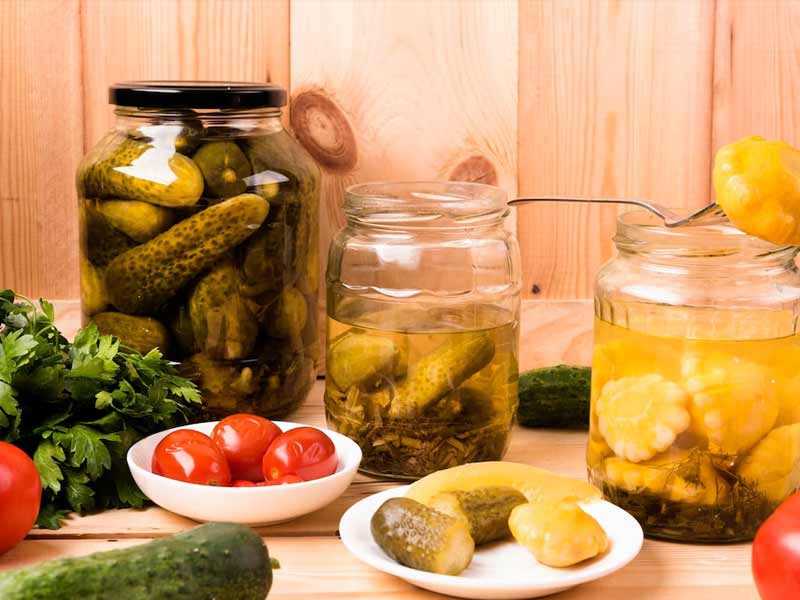Here is Canning Safety. Canning is a wonderful way to preserve the flavors of fresh produce, allowing you to enjoy them long after the harvest season has ended. Whether you’re canning jams, pickles, or vegetables, it’s essential to prioritize safety throughout the canning process. By following proper canning safety guidelines, you can ensure the longevity, quality, and safety of your homemade preserves. In this article, we will discuss the key steps and practices to keep in mind for safe canning.
Importance of Canning Safety

Canning safety is of utmost importance as it helps prevent foodborne illnesses and ensures the preservation of your canned goods. The goal of canning is to create an environment that inhibits the growth of harmful bacteria and molds, extending the shelf life of the preserved food. By following safe canning practices, you can confidently enjoy your homemade delights without any concerns (Canning Safety).
Preparing Your Workspace

Before you embark on your canning journey, it’s crucial to create a clean and organized workspace (Canning Safety). You can learn Troubleshooting Canning. Here’s what you need to consider:
Clean and Organized Environment
Ensure that your work area, utensils, and canning equipment are clean and free from any dirt or debris. Wash your hands thoroughly with soap and warm water before handling any ingredients or jars. A clean environment minimizes the risk of contamination and helps maintain the integrity of your canned goods.
Essential Tools and Equipment
Gather all the necessary tools and equipment required for canning, such as canners, jars, lids, bands, funnels, and ladles. Ensure that your equipment is in good condition and properly maintained. Inspect jars for cracks or chips and discard any that are damaged. Having the right tools and equipment on hand will facilitate a smooth and safe canning process (Canning Safety).
Selecting High-Quality Ingredients
The quality of your ingredients plays a vital role in the safety and taste of your canned goods. Choose fresh, ripe produce and discard any spoiled or damaged parts. It’s recommended to source ingredients from reliable sources, such as local farmers’ markets or trusted suppliers. Using high-quality ingredients enhances the flavor and nutritional value of your preserved foods. You can Learn Benefits of Canning.
Following Trusted Recipes
When it comes to canning, it’s essential to rely on trusted and tested recipes from reputable sources. These recipes have been scientifically developed and tested to ensure the proper balance of acidity, ingredients, and processing methods. Following reliable recipes minimizes the risk of spoilage, botulism, or other food safety issues. Avoid altering ingredient proportions or processing times unless specified by a trusted source. You can learn Storing Canned Food.
Proper Jar Sterilization
Sterilizing your canning jars is a crucial step in preventing the growth of harmful bacteria. Follow these steps for proper jar sterilization:
- Wash the jars and lids with hot, soapy water, rinsing them thoroughly.
- Place the jars and lids in a large pot filled with water.
- Bring the water to a boil and let the jars and lids boil for 10 minutes.
- Carefully remove the jars and lids from the boiling water using jar lifters or tongs.
- Place the jars upside down on a clean towel to drain and dry.
Correct Processing Times and Pressure
Proper processing times and pressure are essential for canning safety. Different foods require specific processing methods, whether it’s water bath canning or pressure canning. Always refer to tested recipes or trusted sources for the recommended processing times and pressure settings. Processing for too short a time or at insufficient pressure can result in under-processed foods that may pose health risks (Canning Safety).
Testing Jar Seals
After the jars have cooled, it’s important to test the seals to ensure proper preservation. Gently press the center of each lid to check for a firm and concave shape. If the lid springs back, the jar is not properly sealed, and the food inside may be compromised. Unsealed jars should be refrigerated and consumed promptly (Canning Safety). You can learn Steam Canning.
Storing and Using Canned Goods
Proper storage is key to maintaining the quality and safety of your canned goods. Store your sealed jars in a cool, dark place away from direct sunlight. Ideally, the temperature should be below 85°F (29°C) to prevent spoilage. Label each jar with the date of canning for easy reference.

Before using your canned goods, inspect the jars for any signs of spoilage, such as mold growth, off smells, or unusual discoloration. If any doubts arise about the safety of the contents, it’s best to discard the jar. When consuming canned goods, ensure that they are heated thoroughly before serving to eliminate any potential bacteria (Canning Safety).
Conclusion for Canning Safety

Canning is a rewarding and enjoyable way to preserve the flavors of the season. By following proper canning safety guidelines, you can confidently create delicious and safe canned goods. From maintaining a clean workspace to selecting high-quality ingredients and using reliable recipes, each step contributes to the overall safety of your preserved foods. So, embrace theart of canning with confidence, knowing that you are prioritizing safety and preserving the flavors of your favorite fruits, vegetables, and jams (Canning Safety).
FAQs – Canning Safety
- Can I reuse lids and bands for canning?
- No, it is recommended to use new lids and bands for each canning session. Used lids may not create a proper seal, leading to potential spoilage.
- What is the difference between water bath canning and pressure canning?
- Water bath canning is suitable for high-acid foods like jams and pickles, while pressure canning is necessary for low-acid foods such as vegetables and meats. Pressure canning uses high heat and pressure to eliminate the risk of bacterial growth.
- Can I substitute vinegar for lemon juice in canning recipes?
- Yes, you can use vinegar as a substitute for lemon juice in some canning recipes. However, ensure that the acidity level remains appropriate for safe preservation.
- What should I do if a jar doesn’t seal properly?
- If a jar doesn’t seal properly, refrigerate it immediately and consume the contents within a few days. Alternatively, you can reprocess the jar using a new lid according to the recommended processing time.
- How long can I store canned goods?
- When properly processed and stored, canned goods can typically be stored for up to one year. However, it’s always recommended to check for signs of spoilage before consuming.
We proudly present: 1TouchFood, a website specifically designed for online cooking education. Our platform offers a diverse range of culinary tutorials, aimed at teaching aspiring chefs and cooking enthusiasts the art of cooking from the comfort of their own homes. Whether you’re a beginner or an experienced cook looking to expand your culinary repertoire, 1TouchFood provides step-by-step video lessons, interactive recipes, and expert tips to enhance your cooking skills.
Our dedicated team of professional chefs and culinary experts have meticulously crafted each lesson to ensure a seamless and immersive learning experience. Join us on 1TouchFood and unlock your potential in the kitchen as you embark on a culinary journey filled with flavors, techniques, and newfound inspiration.
Please follow us on linkedin. You can learn all best canadian food recipes you can check our Culinary 1TouchFood Youtube and Telegram 1TouchFood page. Don’t forget Fighting Obesity Magazine and Radio Cooking.

